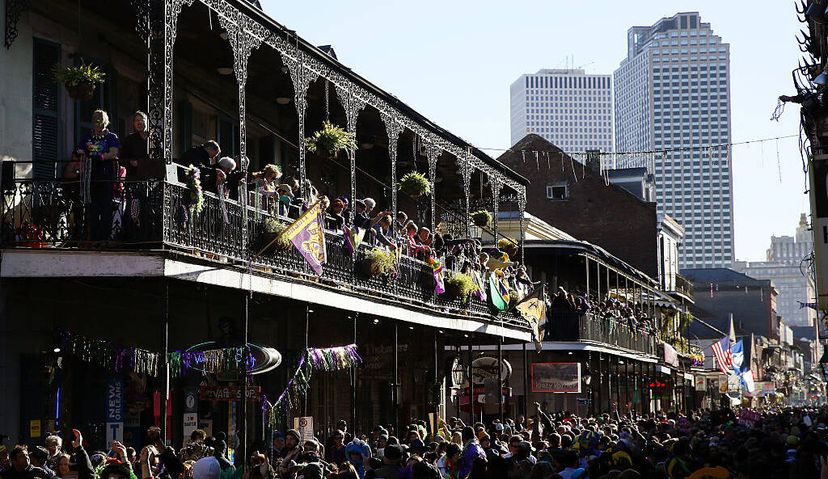
When I first moved to New Orleans in the early 80s I realized almost immediately that the Big Easy was unlike any other city in the world — especially when it comes to language. During my first Carnival, I found myself confused by some of the terms I heard. Luckily, I had family and friends who explained to me all of the important Mardi Gras lexicon I needed to know. If you’re a newcomer to New Orleans during the Carnival season, here are 10 phrases you need to know.
Advertisement
Krewe
Krewes are private, social organizations in New Orleans. They are responsible for putting on the awesome parades and balls held each year during Carnival. Each krewe has a royal court (King, Queen, Duke, etc.). Each year the krewes decide on a theme for their float, which is decorated accordingly. Many krewes also have celebrity riders and/or Grand Marshals.
Captain
The captain is the chief organizer and planner for his krewe. His role is actually more important than the king, contrary to what some might assume.
Flambeaux
If you attend a night parade, you’ll notice guys carrying huge torches, called flambeaux. In the days before street lights, it was the only way to view a night-time parade. Although not necessary today, the tradition remains.
Maskers
A masker is basically a float rider, although you may hear some people refer to anyone dressed in a costume or wearing a mask as a masker.
Advertisement
Den
So a krewe’s gotta have somewhere to build and store their massive floats right? It’s called a den and basically, it’s a big warehouse. In the past, the den’s location was secretive but that’s not the case today.
Throws
Throws are inexpensive items hurled at the masses by float riders. They include beads, cups, toys, and the much sought-after doubloon — an aluminum coin stamped with a krewe’s insignia and the theme for that year. The prized Zulu coconut, however, is not thrown (for obvious reasons) but is passed down to anyone lucky enough to snag one. Note: Having a cute kid with you significantly increases the number of throws hurled your way.
Neutral Ground
The neutral ground is what’s typically called the “median” in other cities. Parade-goers like to stake out a good spot on the neutral ground to watch the floats drift by; it’s not unusual for people to arrive hours before the parade is scheduled to begin. You’re bound to see people in folding chairs and ladders so the kiddies can get a better view. You can also stand on the sidewalk side and in New Orleans people generally have a preference. I almost always stand on the sidewalk side.
King Cake
A tradition that most people in New Orleans look forward to is the arrival of King Cake season which begins on January 6. This oval-shaped pastry is covered in icing and sprinkled with sugar (in the Mardi Gras colors of purple, green, and gold). You can buy them traditional or stuffed with one or more ingredients like cream cheese, apples, or other fruit. There’s also a wee plastic baby doll inside. The person who “finds” the baby has to buy the next cake.
Mardi Gras Indians
The Mardi Gras Indians are a group of African-American revelers who parade, on foot, through mostly predominately black neighborhoods. They wear elaborately decorated costumes and when the tribes meet with other tribes (known as gangs), they entertain onlookers with a verbal spar, using rhythmic call and response chants.
Advertisement
Lundi Gras
In New Orleans Fat Tuesday is the culmination of the Carnival season, however, before the big day, we also have a day-long free festival, Lundi Gras or Fat Monday. Lundi Gras takes place along the Mississippi River in Woldenberg Park and features music, food, and entertainment for the entire family.
Advertisement